Austria Auctions 7
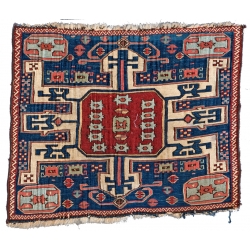
Highlights from AA VII
24 images
Austrian Auctions offers rugs and textiles drawn from several international collections in its seventh sale on Saturday 22 April at 4 pm. For those that have not seen the online catalogue here HALI chooses a few sale highlights.
- Yomut Main Carpet, Turkmenistan, second half 19th century. 300 x 180 cm (9ft. 10in. x 5ft. 11in.). Austrian Auctions, Vienna, 22 April, Lot: 239, Estimate: € 8.000 – 10.000
- Shahsavan Sumakh Panel, Azerbaijan, late 19th century. 97 x 39 cm (3ft. 2in. x 1ft. 3in.) Published: „Mafrasch“, Siawosch Azadi 1985, Page 144. Austrian Auctions, Vienna, 22 April Lot: 22, Estimate: € 1.400 – 1.800
- Central Anatolian Kilim, Turkey, second half 19th century. 427 x 170 cm (14ft. 1in. x 5ft. 7in.). Austrian Auctions, Vienna, 22 April Lot: 32, Estimate: € 5.000 – 6.000
- Tekke Main Carpet, Turkmenistan, mid-19th century. 220 x 200 cm (7ft. 3in. x 6ft. 7in.). Austrian Auctions, Vienna, 22 April, Lot: 43, Estimate: € 12.000 – 16.000
- Kashan Mohtashem, Persia, late 19th century. 75 x 69 cm (2ft. 6in. x 2ft. 3in.); Warp: silk, weft: cotton, pile: wool with silk highlights. Austrian Auctions, Vienna, 22 April, lot 72, Estimate: € 3.500 – 4.500
- Shasavan Sumakh Bag face, Azerbaijan, mid-19th century. 40 x 50 cm (1ft. 4in. x 1ft. 7in.). Austrian Auctions, Vienna, 22 April, Lot: 150, Estimate: € 8.000 – 12.000
- Kasim Ushak, Caucasus, second half 19th century. 262 x 123 cm (8ft. 7in. x 4ft.). Austrian Auctions, Vienna, 22 April, Lot: 152, Estimate: € 3.500 – 4.500
- Shakhrisyabz Suzani, Uzbekistan, mid-19th century. 242 x 184 cm (7ft. 11in.); Published: “Alte orientalische Flachgewebe”, Franz Bausback, 1977, page 70. Price was DM 16000. Austrian Auctions, Vienna, 22 April, Lot: 184, Estimate: € 15.000 – 20.000
- Kordi, Persia, second half 19th century. 166 x 155 cm (5ft. 5in. x 5ft. 1in.); Published: “Kordi”, Wilfried Stanzer 1988, Page 72, Austrian Auctions, Vienna, 22 April, Lot: 218, Estimate: € 4.000 – 5.000
- Gabbeh, Persia, late 19th century. 198 x 155 cm (6ft. 6in. x 5ft. 1in.). Austrian Auctions, Vienna, 22 April, Lot: 219, Estimate: € 4.000 – 5.000
- Verneh, Azerbaijan, second half 19th century. 227 x 176 cm (7ft. 5in. x 5ft. 9in.) Austrian Auctions, Vienna, 22 April, Lot: 227, Estimate: € 7.000 – 8.000
- Shahsavan, Azerbaijan, late 19th century. 320 x 100 cm (10ft. 6in. x 3ft. 3in.). Austrian Auctions, Vienna, 22 April, Lot: 240, Estimate: € 1.600 – 2.200
- Yuncu Kilim, Turkey, 19th century, 234 x 162 cm (7ft. 8in. x 5ft. 4in.) Austrian Auctions, Vienna, 22 April, Lot: 340. Estimate: € 3.000 – 4.000
- Cairo Fragment, Egypt, 16th century, 177 x 126 cm (5ft. 10in. x 4ft. 2in.); Condition: fragment, several repairs and age-related signs of use; warp: wool, weft: wool, pile: wool. Lot: 147, Austrian Auctions, Vienna, 22 April, Estimate: € 8.000 – 12.000. The rugs made the territories belonging to the Mamluk sultans have a number of special features, technical and aesthetic, that set them apart from all other carpets made in the 16th-17th centuries. The threads out of which all textiles and carpets are made were spun together in the other direction in Egypt than in all other countries: S-spun and Z-plied. There are inventory records showing that mention Cairene carpets in European inventories in the 16th and 17th centuries. The Ottomans captured the Mamluk domains in 1517 and it is the Ottoman design repertoire that is depicted in this rug, which woven on wool and without any silk probably dates to the late 16th century. The ground is typically dyed with insect dyes, either lac similar to Mamluk rugs or cochineal as is seen here. These dyes tend to have a corrosive effect on the wool. The variety of colours on this fragment are more apparent than on many fragments and the design represents the full transition to floral motifs from geometric.
- Safavid Textile,Persia, 18th century. 76 x 71 cm (2ft. 6in. x 2ft. 4in.); Warp: silk, weft: silk. Lot: 178, Austrian Auctions, Vienna, 22 April, Estimate: € 7.000 – 9.000. During the first third of the 17th century Shah Abbas concentrated textile production in his new capital Esfahan. He gained control over the silk producing Caspian provinces and due to reconquering the harbours in the Persian Gulf controlled the trade to India and China. Silks produced at that time were derived from court art and produced in the Imperial workshops. Designs were taken from miniature paintings depicting hunting scenes, garden settings and stories from the Shahnama. Typical as well is a design of single flowers in a row. A possible connection to European herbals with their depictions of single plants has been made in terms of the art of the moguls. In this piece we not only see one single flower rising out of an earth mound but another plant form next to it. Behind in the distance we see the light blue coloured shape of another single flower with tilted head.
- Khotan Silk, Eastern Turkestan, first half 19th century. 270 x 184 cm (8ft. 10in. x 6ft.; Warp: silk, weft: silk, pile: silk. Lot: 147, Austrian Auctions, Vienna, 22 April, Lot: 212,Estimate: € 30.000 – 40.000. This silk carpet has a certain Tibetan feel to it. Although it probably was not made in Tibet it may have been intended for export to the region but made in one of the neighbouring carpet producing centres in the oasis towns of eastern-Turkestan in the north or Gansu province in the east. The use of silk and its structure point towards Yarkand or Khotan while the design of the rug and the colours point more towards Gansu. The main border, the ‘Buddhist pearl’ minor border and the field show strong links to China, while the reciprocal other minor border is typical for Gansu. Note also that the ‘endless knot’ symbols in the corner of the same border. Only the decoration in the medallion and the corners could be considered to be east-Turkestan motives; the lack of any of the golden yellow typical of the region and the use of a different shade of red would further the argument that this is in fact a rug made in the Gansu. That having been said, Hans König noted in his seminal article about Gansu carpets in Hali 128 that he didn’t know any silk rugs from the area.
- Qashqai Millefleur, Persia, second half 19th century. 208 x 157 cm (6ft. 10in. x 5ft. 2in.); Warp: wool, weft: silk, pile: wool. Lot: 158, Austrian Auctions, Vienna, 22 April, Estimate: € 14.000 – 18.000. The origins of this design were discussed in relation to a silk Qashqa’i rug from the Azadi Collection in the November 2016 sale, in which the arguments that Cyrus Parham, Iran’s leading rug scholar, puts forward about the Iranian rather Indian origins for this design were laid out. The rugs made in the workshops of the Qashqa’i tribe in the 19th century with this design show a remarkable consistency in design and colour through to the introduction in the early 20th century of an additional inner border to the field. There are two ways in which to distinguish the better examples within this group: the first being the use of natural dyes combined with silk wefts in the foundation as occurs in this example here; the second relates to the drawing of the millefleur field pattern. In the finer and older examples, the spacing between the flowers is greater and the movement of the design rises through the design rather than simply becoming a profusion of flowers filling all of the ground.
- Perepedil Prayer Rug, Caucasus, first half 19th century Warp: wool, weft: wool, pile: wool. 137 x 96 cm (4ft. 6in. x 3ft. 2in.); Lot: 185, Austrian Auctions, Vienna, 22 April, Estimate: € 15.000 – 20.000. The origins of this design are disputed with one school of thought considering that the rams horn motifs have an ancient symbolic resonance, with the other school relating the designs to motifs found on Azerbaijan embroideries and classical carpets. There are a number of white ground Perepedil rugs with paired medallions surrounded by these powerful horned motifs all of which appear to be from early 19th century prior to the introduction of mass weaving in the Caucasus by the Russians in the late 19th century. This example is one of the few single niche prayers within the group and is characterised by the unusual rendition of the classic wine glass and calyx leaf border. The rug has two idiosyncratic qualities that set it part: the first is the pinched lower border where the lower border does not match perfectly the ascending vertical guard borders, and the way that the top of the prayer niche is cut off by the upper border.
- Azerbaijan Embroidery, Azerbaijan, first Half 19th century, 175 x 127 cm (5ft. 9in. x 4ft. 2in.); silk on cotton. Austrian Auctions, Vienna, 22 April, Lot: 95. Estimate: € 8.000 – 12.000. Silk embroideries from the southern Caucasus/Azerbaijan fall into two principle groups. The first, often related to rug designs like Dragon carpets, usually relatively abstract in style and done in cross stich and the second more floral, naturalistic and often depicting people and animals sewn using darning stitch. This example uses darning stitch and shows seated figures and peacocks meaning that it belongs to the second group which is in general more closely related to Iranian art. There seem to be fewer examples of this group published, many of which have designs containing mihrabs drawn in a distinct style. The design of the inner part of the mihrab in this piece is relatively unusual, since most examples with prayer arches show tree of life designs or flowers in vases. Other examples show medallions like in Lot 63 Christies 24.4.12, which has main and minor borders nearly identical to this example. Every flower in the main border has the same floral motif as the appears in the tail of the peacocks that surround the seated figures in the field. The black and white/yellow blocks in the outer and inner frame seem to be a feature of almost all examples of the darning stitch group.
- Qashqai, Persia, mid-19th century, 290 x 160 cm (9ft. 6in. x 5ft. 3in.). Austrian Auctions, Vienna, 22 April, Lot: 90, Estimate: € 16.000 – 20.000. This stately carpet is a rare example of the so-called Qashqa’i khan carpets. These carpets have the classic herati field pattern and four and one medallion and corner design – an urban design rendered in a tribal manner. The white ground is the more typical of the group but there are few examples with a yellow ground. The weave, colours and occasional presence of silk in the foundation indicate that these were woven in workshops under order by the tribal elite; a proposition supported by a number of examples carrying inscriptions from the mid-early 19th century with dedications to members of the tribal aristocracy. This example is elegantly drawn with exceptional colours and is a larger example than many recorded examples. Of particular note is the way that the medallion is clearly overlaid in the field pattern.
- Eagle Group II Main Carpet, Turkmenistan, first half 19th century. 306 x 180 cm (10ft. x 5ft. 11in.) Published: „Turkmenische Teppiche – ein neuer Ansatz“, Jürg Rageth, 2016, Nr. 115; Warp: wool, weft: wool and cotton, Pile: wool. Lot: 166, Austrian Auctions, Vienna, 22 April, Estimate: € 40.000 – 60.000. This Yomut main carpet was first published nearly one hundred years ago in Hartley Clarkes Bokhara, Turkmen and Afghan Rugs from 1922. Looking at the field design of dyrnak guls, the minor border and the overall colouration hints that this carpet might belong to the ‘Eagle Group’ but without depicting any ‘birds’. First identified by Anette Rautenstengel the group typically is piled asymmetrical open to the right and has some cotton in the wefts as in this example. For Jürg Rageth, the drawing and the abundance of additional motives in the main border indicated a date in the 19th century but the high quality of the rug makes a date later than the mid-19th century unlikely. The alems are quite remarkable showing cartouches filled with stacked diamonds. Within the alem and in the upper field are numbers of little animals woven in yellow. Since its first publication in 1922 no other comparable example as surfaced.
On 22 April 2017 at 4pm, Austria Auction Company in Vienna will present its seventh specialist auction of antique rugs and textiles. With 330 lots, the sale contains material from several prominent private collections as well as the second part of rugs belonging to esteemed Hamburg-based scholar/dealer Siawosch Azadi, the first part of which was successfully sold on 11 November 2016.
The Vienna auction house has become known for the range and quality of the material that it offers in its specialist sales, and this auction contains a wealth of collectible material: bags and trappings from Iran, the Caucasus and the Turkmen tribes, as well as fine Persian workshop weavings, traditional tribal and village rugs, and important Classical carpets, aimed to accommodate the taste and budgets of both the seasoned bidder and the nascent collector. To view the catalogue visit the company website or to bid online visit live auctioneers here.


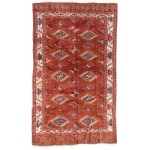
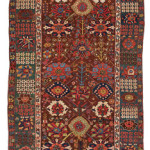
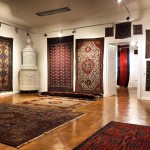



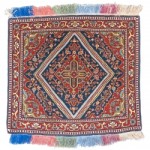

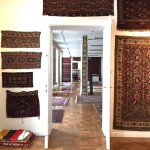

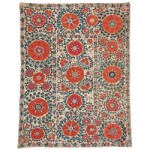
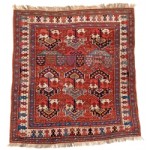
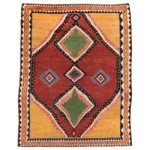
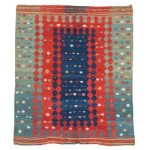
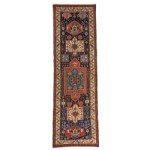

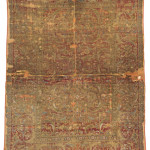
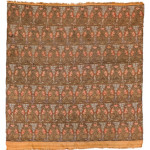
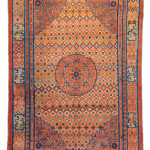
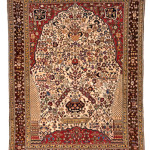
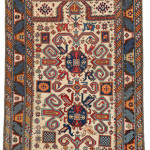

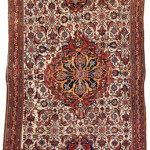
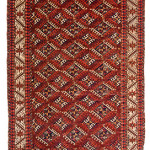
























Comments [0] Sign in to comment